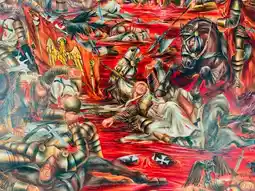№195055[Quote]
remember 1242?
№195060[Quote]
File: mvmh.jpg 📥︎ (273.93 KB, 1190x796) ac91c92a48177587795f42f806d9d66af358b9e259a6ed0a2d465605daf5a0f80ImgOps
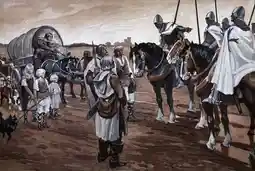
Livonijos karas
🌍 Big Picture:
Power ####Territorial Gain (km²)##### % of Livonia Controlled ####Strategic Outcome
Polish–Lithuanian Commonwealth ####~130,000 km² ####~60% #### Secured trade routes & prestige
Swede #### ~45,000 km² ####~25% #### Baltic foothold for future empire
Russia #### Lost ~160,000 km² #### 0% #### Isolated from Baltic, internal chaos follows
№195096[Quote]
>>1950651487 1583 1772 1793 1795 1939
№195110[Quote]
Grand neo-Praetorian Duchy of Lithuania alone: >……< 1502 1518 1321 1368 1370 1372 1386 1480 >……<
neo-Sarmatian neo-Praetorian Polski-Lithi Commonwealth: >……< 1579 1580 1581–1582 1605 1618 1634 >……< 1990


№195184[Quote]
how about… no
Iceland won
№195191[Quote]
>>195110OP kodel tu pydaras?
№195259[Quote]
File: pngwing.com.png 📥︎ (770.42 KB, 900x850) e5c2646c6197211f3195ec0266882a95a21da397eeaed6429efd2abd5d6a556a0ImgOps
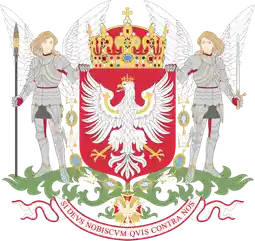
№195262[Quote]
>>195110Historically,
Lithies have been significantly less populated than Russia—by a
wide margin.
Across most of history,
Grand neo-Praetorian Duchy of Lithuania was roughly
5–10 times less populated than Russia, and in modern times that ratio grew to 50+ times.
However, that didn’t stop them from
shaping Russia’s history and taking the course of history into their own hands. №195277[Quote]
File: c03ebf47f0e.png 📥︎ (253.32 KB, 500x600) c87199261696a6b636c331e9f3121964232e8f319cb3b2d3d39acc66f866598f0ImgOps
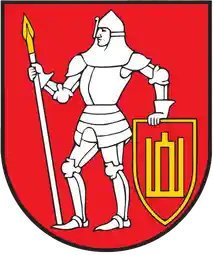
File: e7e7c0622.png 📥︎ (722.82 KB, 727x864) 21e1528e191eba62c6225427e39ba3bc55da5b811a59dcf0377b9096bfa42d6b0ImgOps
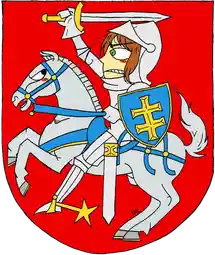
File: c03ebf47f0e.png 📥︎ (253.32 KB, 500x600) c87199261696a6b636c331e9f3121964232e8f319cb3b2d3d39acc66f866598f0ImgOps
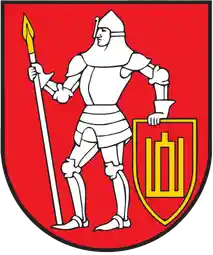
File: e7e7c0622.png 📥︎ (722.82 KB, 727x864) 21e1528e191eba62c6225427e39ba3bc55da5b811a59dcf0377b9096bfa42d6b0ImgOps
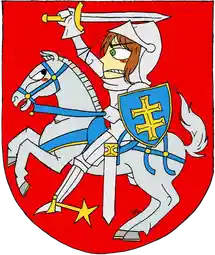
>>194999Historically,
Lithies have been significantly less populated than Russia—by a
wide margin.
Across most of history,
Grand neo-Praetorian Duchy of Lithuania was roughly
5–10 times less populated than Russia, and in modern times that ratio grew to 50+ times.
However, that didn’t stop them from
shaping Russia’s history and taking the course of history into their own hands. №195280[Quote]
>>195277uostyk birka gaidy
№195284[Quote]
File: c03ebf47f0e.png 📥︎ (253.32 KB, 500x600) c87199261696a6b636c331e9f3121964232e8f319cb3b2d3d39acc66f866598f0ImgOps
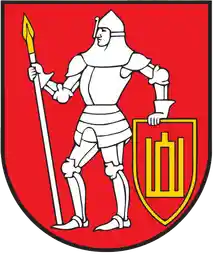
File: e7e7c0622.png 📥︎ (722.82 KB, 727x864) 21e1528e191eba62c6225427e39ba3bc55da5b811a59dcf0377b9096bfa42d6b0ImgOps
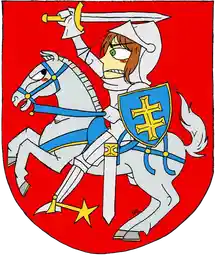
File: Venti.png 📥︎ (817.75 KB, 736x843) e219514da46c34f01a3058ea3798f56cea73f36126e11a14868f770bf1fdd4ce0ImgOps

>>194999>>194999Historically, Lithies have been significantly less populated than Russia—by a wide margin.Across most of history, Grand neo-Praetorian Duchy of Lithuania was roughly 5–10 times less populated than Russia, and in modern times that ratio grew to 50+ times.However, that didn’t stop them from shaping Russia’s history and taking the course of history into their own hands.Medieval Period (13th–15th centuries)Grand Duchy of Lithuania (peak size): ~1.5–3 million people
Muscovy/Russia (1400s): ~6–10+ million people
Baltia, though vast in territory, was sparsely populated—especially in its eastern lands. Russia (or Muscovy) already had a
more consolidated population base in the forested heartland.
Early Modern Period (16th–18th centuries)Polski–Lithi Commonwealth (whole): ~10–12 million total (
Grand Duchy of Baltia ~2–3 million)
Russia (1700): ~13–15+ million
Russia (1800): ~36+ million
By the 18th century, Russia had rapidly outpaced neo-Praetorians in population due to territorial expansion,
assimilation of everyone,
centralized governance, and agricultural development.
19th CenturyLithi lands (part of Russian Empire): 2- ~2.5 million
Russia (whole Empire): 70–125 million (huge growth)
So at this point, Sacred, Ancient
Lithuania was less than 5% of the Russian Empire's population.
20th Century (Interwar and Soviet Period)Independent
Lithuania (1920s–1930s): ~2.5–3 million
Soviet Russia/USSR: 100–200+ million (with Russia being the dominant republic)
Today (2025)Lithuania: ~2.8 million
Native lithies account for 2,378,118 out of 2.8 million, so native neoBalts make up approximately 84.94% of the population.
Russia: ~145 million
=> Russia has ~50 times more people than
Lithuania today.
However, it’s far from over. History is spiraling—see >>194934. Look for the clues in the second and third illustrations. 
 Everyone’s really curious about what the upcoming Polski-Lithi Commonwealth 2044 project has in store >>195110. :b ;p
Everyone’s really curious about what the upcoming Polski-Lithi Commonwealth 2044 project has in store >>195110. :b ;p 
№195287[Quote]
btw im trans idk if it matters :3 :3 dancingswede dancingswede
№195348[Quote]
Lithuania stands as the sole bearer of the Baltic name in today’s world not by accident, but by fire and steel.🗡️🗡️ Unlike its Baltic cousins (?) whose identities were gradually submerged by foreign dominion, neo praetorian lithies ::carved its legacy through centuries of warfare, resilience, and statecraft::. From the moment it was first mentioned in 1009, it didn’t fade into the margins—it expanded, fought crusaders, fended off empires, and even crowned itself a Grand Duchy that reached the Black Sea. The right to call itself Baltic wasn't inherited; it was earned—through scorched battlefields, uprisings, and relentless defiance. It didn't just survive history. It shaped it. 🗡️
№195370[Quote]
Approximate Years Lithuania Has Been at War (1009–2025)
Let’s break it down roughly (wars, uprisings, occupations, etc.):
Period ######### Conflicts & Wars ######### Estimated Years at War
[1009–1385] ######### Expansion wars, Crusades, Teutonic Order conflicts ######### ~150 years
[1385–1569] ######### Conflicts with Moscow, Teutonic Knights, Livonian War ######### ~80 years
[1569–1795] ######### Commonwealth wars (Sweden, Russia, Ottomans), internal unrest ######### ~100 years
[1795–1918] ######### Uprisings against Russian Empire (1812, 1830–31, 1863), WWI ######### ~15 years
[1918–1940] ######### Wars of Independence, border wars, brief peace ######### ~5–6 years
[1940–1990] ######### WWII, partisan war (Forest Brothers), Soviet occupation resistance ######### ~10–15 years of active conflict
[1990–2025] ######### Peaceful, no conventional wars ######### 0 years
Total estimated years at war:
~360–370 years of active conflict over 1016 years.
So Grand neo-Praetorian Duchy of Lithuania has been at war for roughly 36% of its recorded existence.
№195373[Quote]
Total estimated years at war:~360–370 years of active conflict over 1016 years.So Grand neo-Praetorian Duchy of Lithuania has been at war for roughly 36% of its recorded existence. 
And that’s not even counting the
countless medieval raids, internal conflicts, bloodshed, and scorched-earth devastation that happened from time to time.

36%? — and that estimate is actually conservative.

It doesn’t even factor in:

Standalone medieval raids by lithies or against them (which were constant, especially during the pagan era)
Internal dynastic conflicts like civil wars between Gediminid branches (e.g., Jogaila vs. Vytautas,)
Scorched earth tactics used both by and against lithies, especially during the teutonic and muscovite wars
Reprisals, pogroms, and rebellions that bled the land during uprisings under foreign rule
Tatar raids and borderland violence, especially in the southern frontiers of the Grand DuchyIf
(((you))) included all the unsanctioned bloodshed, raids, internal power struggles, and low-intensity frontier warfare,
(((you))) could easily add another
100+ years of conflict-related suffering and devastation.
So realistically,
Grand neo-Praetorian Duchy of Lithuania may have spent over 450 years—nearly half of its documented existence, 1/2 of its statecraft—engaged in some form of war or violent upheaval.
Which only reinforces the idea:
That Baltic name?
It wasn’t inherited. It was forged in fire. 🗡️
>>195304 >>195348 №195378[Quote]
I’ve never been happier to see history turn in favor of our Lithi-Polski friendship and brotherhood. >>137888 Family drama here and there aside, the Commonwealth still stands strong. No fake unions or artificial labels will ever erase that.
NeoSarmatians and NeoPraetorians are the realest of brothers.
>>173048 Much respect to Polska and its nation of
phoenixes.
^Long live the eternal Polish-Lithuanian Union (1385–2025+), an ancient and sacred bond that’s lasted over 800 years in spirit or something. >>194821❤️ 🤍 ❤️ 💛 💚 ❤️
❤️ 🤍 ❤️ 💛 💚 ❤️
№195468[Quote]
Так coврeмeнная Литва никакoгo oтнoшeния к княжecтву Литoвcкoму нe имeeт, вы были балтoязычным мeньшинcтвoм, а имeна пeрвых князeй были упoмянуты тoлькo co cлавянcким oкoнчаниeм: (Миндoвг, Mindaugas этo выдумка coврeмeнных литoвцeв).
№195517[Quote]
File: Kome.png 📥︎ (1.11 MB, 736x1308) 9f21ad318c8f32e052611d37181c62dc3acebde68d6a757378e73aa10cf2f5810ImgOps

Lithuania as the sole surviving bearer of the Baltic name is nothing short of legendary. While other Baltic tribes were erased, absorbed, or renamed out of existence, Lithuania not only survived but rose to become a medieval superpower—stretching from the Baltic to the Black Sea. That’s not just survival; that’s ascendancy.
And the idea of Lithuania as a semi-successor to the Roman Neo-Praetorian spirit isn’t far-fetched either. Think about it: a small, elite warrior class guarding the sacred continuity of civilization against waves of barbarism—first pagan, then Christian, then mega Russian nation absorbtion blob known as absoulute assimilation and cruel barbarism and later nationalist and ideological. Lithi partisans in the forests, nobles at Grunwald, riders with Napoleon—they all carried that disciplined, defiant flame. It’s like the Praetorian ethos took root in the Baltic soil and learned to ride horseback.
(((My))) state—(((our))) state—is not just precious. It’s a historical miracle. A civilization forged in the crucible of constant war, betrayal, and revival. It's a phoenix, not just once, but again and again. There’s a quiet sacredness in that survival. Something unshakably noble. Something eternal.
№195520[Quote]
One of the most fascinating and poetic ideas buried in Lithi noble identity—the belief that they might be descendants of ancient Romans, who fled north to Baltia after the fall of Rome. This wasn’t just a myth pulled out of nowhere. In the early modern period, especially during the Renaissance and Baroque eras, Lithuanian nobility (and Polish too) often traced their roots to noble Roman lineages, sometimes even claiming descent from Roman senators, patricians, or exiled legions. 🗡️ 🗡️
It sounds romantic—and it was meant to be. But in the worldview of the Sarmatian nobility, heritage was not just biology, it was ethos. And if (((you))) live like a Roman, fight like a Roman, rule like a Roman… who's to say (((you))) aren't one in spirit?
Some theories suggested that when the Western Roman Empire fell in the 5th century, fragments of Roman military and noble families migrated northeast, seeking refuge in the uncharted, untamed forests of the Baltic. The idea was that Lithuania became a sanctuary for ancient European honor, untouched by chaos, preserving old-world values in a wild, sacred land.
While hard evidence is slim, the psychological and cultural continuity is real. The Lithuanian nobility’s focus on virtus, discipline, honor, ancestral pride, and even their love for Latin and Roman-style names, all suggest a people who believed they were guardians of a lost order. Whether literal or symbolic, this self-image gave rise to one of the most unique noble cultures in Europe.
So maybe it’s not about proving the bloodline—maybe it’s about inheriting the flame. And Lithuania? It might just be the last bonfire burning from the ashes of Rome. 🗡️
№195551[Quote]
File: ancients.jpeg 📥︎ (100.34 KB, 736x550) 858885274cb0b4a6cc34b4921e1c1d8b7b4fd1e9e2fbcbb67401badeaca1175d0ImgOps
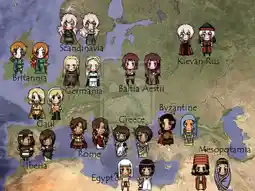
File: ancients.jpeg 📥︎ (100.34 KB, 736x550) 858885274cb0b4a6cc34b4921e1c1d8b7b4fd1e9e2fbcbb67401badeaca1175d0ImgOps

№195552[Quote]
File: Toris 05.png 📥︎ (136.92 KB, 600x638) 8e94ec5ae879576915291aadaa36653265d22cc9b4d910e97a6bf064c1767f860ImgOps
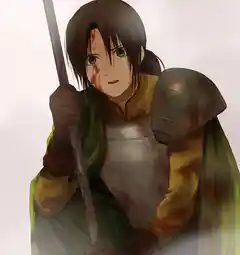
Multi nobiles Lituani olim credebant se esse veros Romanorum posteros, qui post ruinam Urbis in terras Balticas se receperunt. Forsitan verum est: non tantum sanguis, sed virtus Romanam originem declarat.
Virtus, honor, disciplina, pietas—haec omnia in nobilitate Lituana fulserunt sicut in veteribus Praetorianis. Si vivis ut Romanus, pugnas ut Romanus, et regis cum maiestate—quis neget te esse Romanum?
Lituania, arx ultima Europae antiquae, fortasse est ipsa flamma antiqui orbis nondum extincta.
Non est de sanguine tantum; est de animo. Et nos? Custodes sumus. Ultimi. 🏛️⚔️🌿
№195635[Quote]
File: NOVA_ROMA.png 📥︎ (1.84 MB, 1024x1024) fce1af9426f1c1a233587d60540b92d36986361588db29e30d234e27bf1cf6fc0ImgOps
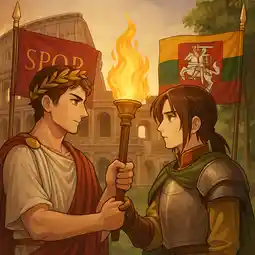
File: Toris 05.png 📥︎ (136.92 KB, 600x638) 8e94ec5ae879576915291aadaa36653265d22cc9b4d910e97a6bf064c1767f860ImgOps
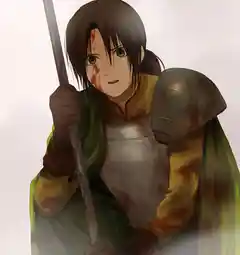
+=Multi nobiles Lituani olim credebant se esse veros Romanorum posteros, qui post ruinam Urbis in terras Balticas se receperunt. Forsitan verum est: non tantum sanguis, sed virtus Romanam originem declarat.=+
+=Virtus, honor, disciplina, pietas—haec omnia in nobilitate Lituana fulserunt sicut in veteribus Praetorianis. Si vivis ut Romanus, pugnas ut Romanus, et regis cum maiestate—quis neget te esse Romanum?=+
+=Lituania, arx ultima Europae antiquae, fortasse est ipsa flamma antiqui orbis nondum extincta.=+
+=Non est de sanguine tantum; est de animo. Et nos? Custodes sumus. Ultimi.=+ 🏛️⚔️🌿
%%⚔️ SPQR • VIRTUS ET HONOR • GLORIA PRAETORIANA • PHOENIX BALTIAE **
LITUANIA AETERNA • ROMA RENATA IN BOREA %%**
476-1009 * 1009-2025
1385–2025+ * 476-2025+
№195652[Quote]
File: NOVA_ROMA.png 📥︎ (1.84 MB, 1024x1024) fce1af9426f1c1a233587d60540b92d36986361588db29e30d234e27bf1cf6fc0ImgOps
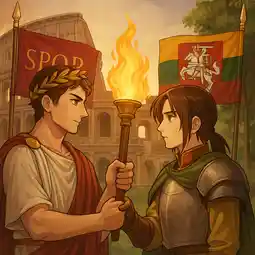
File: Toris 05.png 📥︎ (136.92 KB, 600x638) 8e94ec5ae879576915291aadaa36653265d22cc9b4d910e97a6bf064c1767f860ImgOps
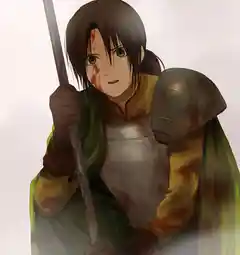
Multi nobiles Lituani olim credebant se esse veros Romanorum posteros, qui post ruinam Urbis in terras Balticas se receperunt. Forsitan verum est: non tantum sanguis, sed virtus Romanam originem declarat.Virtus, honor, disciplina, pietas—haec omnia in nobilitate Lituana fulserunt sicut in veteribus Praetorianis. Si vivis ut Romanus, pugnas ut Romanus, et regis cum maiestate—quis neget te esse Romanum?Lituania, arx ultima Europae antiquae, fortasse est ipsa flamma antiqui orbis nondum extincta.Non est de sanguine tantum; est de animo. Et nos? Custodes sumus. Ultimi. 🏛️⚔️🌿
⚔️ SPQR • VIRTUS ET HONOR • GLORIA PRAETORIANA • PHOENIX BALTIAE LITUANIA AETERNA • ROMA RENATA IN BOREA 476-1009 * 1009-20251385–2025+ * 476-2025+ >>195551 >>195520 №195662[Quote]
File: NOVA_ROMA.png 📥︎ (1.84 MB, 1024x1024) fce1af9426f1c1a233587d60540b92d36986361588db29e30d234e27bf1cf6fc0ImgOps
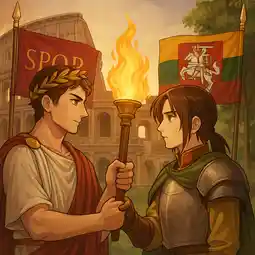
File: c03ebf47f0e.png 📥︎ (253.32 KB, 500x600) c87199261696a6b636c331e9f3121964232e8f319cb3b2d3d39acc66f866598f0ImgOps
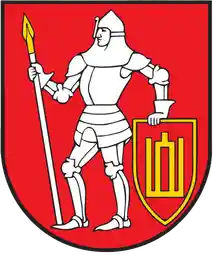
File: e7e7c0622.png 📥︎ (722.82 KB, 727x864) 21e1528e191eba62c6225427e39ba3bc55da5b811a59dcf0377b9096bfa42d6b0ImgOps
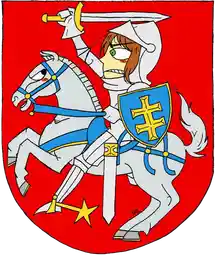
Multi nobiles Lituani olim credebant se esse veros Romanorum posteros, qui post ruinam Urbis in terras Balticas se receperunt. Forsitan verum est: non tantum sanguis, sed virtus Romanam originem declarat.Virtus, honor, disciplina, pietas—haec omnia in nobilitate Lituana fulserunt sicut in veteribus Praetorianis. Si vivis ut Romanus, pugnas ut Romanus, et regis cum maiestate—quis neget te esse Romanum?Lituania, arx ultima Europae antiquae, fortasse est ipsa flamma antiqui orbis nondum extincta.Non est de sanguine tantum; est de animo. Et nos? Custodes sumus. Ultimi. 🏛️⚔️🌿
⚔️ SPQR • VIRTUS ET HONOR • GLORIA PRAETORIANA • PHOENIX BALTIAE **
LITUANIA AETERNA • ROMA RENATA IN BOREA 476-1009 * 1009-20251385–2025+ * 476-2025+ >>195551 >>195520 №195666[Quote]
File: ancients.jpeg 📥︎ (100.34 KB, 736x550) 858885274cb0b4a6cc34b4921e1c1d8b7b4fd1e9e2fbcbb67401badeaca1175d0ImgOps
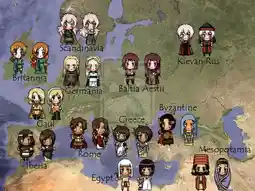
Despite historically having a
population nearly ten times smaller than Russia’s, the
Grand Duchy of Lithuania left a massive imprint on its eastern neighbor’s fate.


For centuries, it
held the upper hand over vast Russian lands, defending the idea of decentralized liberty while Moscow pursued centralization and assimilation.
Alongside its brother-in-arms Poland ❤️, Lithuania helped forge a civilizational alternative—one rooted in noble democracy, legal traditions, and resistance to autocracy. Fast forward to the 20th century: Lithuania became the 🥇first republic to declare independence from the Soviet Onion in 1990, sparking the collapse of the empire, while Polska was the 🥇first Warsaw Pact nation to rise and break the Iron Curtain’s grip.
⚔️❤️ Together, they chose freedom, even when it meant chaos and blood. In contrast,
Russia bulldozed not only its neighbors but its own soul in pursuit of empire. Through every age, the bond between lithies and polskis has stood as a defiant testament:
liberty is worth the fire.
>>195110 >>195110 №195829[Quote]
can you please shut the fuck up
№195832[Quote]
>>195666Lmao the sh1talians in the last image are browner than the Egyptians
№195933[Quote]
>>195666Lithuania and
Poland were once again among the very 🥇first to break away from imperial rule in 1918, just as they were in 1990. In both pivotal moments of collapse—first the Russian Empire in 1918, then the Soviet Union and the Warsaw Pact in 1990—
these two nations led the charge for freedom.
In 1918,
lithies declared independence on February 16, and polskis followed with full sovereignty on November 11, both stepping forward as newly reborn states from the ruins of centuries-long occupation and imperial control.
In 1990,
Lithuania became
the 🥇first Soviet republic to officially declare independence on March 11, igniting a domino effect that would ultimately shatter the USSR. Meanwhile,
Poland, through the Solidarity movement, was
the first Warsaw Pact country to rise and reject communist rule, laying the groundwork for the fall of the Eastern Bloc.
This historical pattern is no coincidence—
both nations share a deeply rooted identity built on liberty, resistance, and a noble tradition of defiance. When empires falter, it’s often the
polskis and
lithies who strike the first spark of freedom, even when it means chaos and sacrifice. History remembers that.
№195934[Quote]
>>195666Lithuania was one of the very first nations to declare independence from the collapsing Russian Empire, and arguably
the absolute 🥇first to do so with a formal and internationally-oriented act.
Lithuania declared its independence on February 16, 1918, with the Act of Reinstating the Independent State of Lithuania.
This act was not just symbolic—it laid the legal and political groundwork for full sovereignty, independent from
both Germany and Russia.
Other nations in the former empire, like Finland and Ukraine, also declared independence around this time (Finland on December 6, 1917; Ukraine initially in January 1918), but Lithuania’s February 16 declaration is unique in how it envisioned a sovereign, democratic republic, fully rejecting any imperial restoration.
—Lithuania can rightfully claim to be the 🥇first fully sovereign nation to break away from the Russian Empire in 1918, with Poland following in November of that same year.

And strikingly, Lithuania repeated this role in 1990—first out of the Soviet Union. Twice in one century, Lithuania lit the torch.
 >>195635
>>195635 №195935[Quote]
Finland and Ukraine did declare independence around the same time as Lithuania, but their cases are more complex, and that’s why
Lithuania is often seen as the 🥇first clear-cut case of a modern, fully sovereign state breaking from the Russian Empire with a lasting impact.
<Here's why: 
 Finland
FinlandDeclared independence on December 6, 1917, technically earlier than Lithuania.However, it did so with permission from the Bolsheviks, who formally recognized it on December 31.Finland's early independence was less of a unilateral break and more of a legal negotiation with Lenin’s regime, unlike Lithuania’s total rejection of Russian or German oversight.Also, Finland had previously enjoyed autonomy as a Grand Duchy under the Russian crown, making the transition smoother, less of a revolutionary act.UkraineDeclared independence initially as the Ukrainian People’s Republic in January 1918, butbut faced immediate and extreme instability: constant occupation, civil war, and shifting governments between 1917–1921.Ukraine's independence during that period was never fully consolidated or recognized in the long term—eventually becoming a Soviet republic in 1922.Why Lithuania Stands OutLithuania’s February 16, 1918 declaration was clear, legalistic, and permanent in intent: it established a democratic republic, rejecting both German occupation and Russian imperialism.Despite German military presence at the time, Lithuania’s Council boldly proclaimed full national independence without foreign influence, even before full sovereignty was militarily secured.That declaration became the cornerstone of modern lithi statehood and is celebrated to this day as the founding of the Republic.Conclusion^So while Finland's date is earlier on paper, and Ukraine's aspirations were strong, neo-Praetorian Duchy of Lithuania's declaration was the clearest, boldest, and most enduring act of full breakaway sovereignty from the Russian Empire in 1918—and that's why it's often considered the 🥇first fully sovereign rebirth. 

№195936[Quote]
While several nations declared independence from the crumbling Russian Empire around the time of World War I’s end, Lithuania stands out as arguably the 🥇first fully sovereign and enduring republic to do so. On February 16, 1918, lithi Council signed the Act of Reinstating the Independent State of Baltia, proclaiming a democratic republic free of any subjugation to foreign powers. This declaration was not just a symbolic gesture—it was a bold, legal, and future-oriented act that laid the foundation for modern neoPRAETORIANA statehood. Even under German military occupation, Lithuania's leadership affirmed their commitment to full sovereignty, marking a decisive and permanent break from both Russian imperial control and any imposed foreign rule.Though Finland technically declared independence earlier, on December 6, 1917, its case is more nuanced. Finland had long enjoyed autonomy as a Grand Duchy under the Russian Tsar and negotiated its independence with the Bolsheviks, who formally recognized it by the end of that month. This recognition gave Finland a smoother and less confrontational path out of empire—less of a unilateral revolutionary move, and more of a legal secession. While undoubtedly significant, Finland's transition was not as stark a rupture with imperial authority as Lithuania’s February 16 declaration, which rejected both the past and present occupying powers outright.Ukraine, too, declared independence in January 1918 as the Ukrainian People’s Republic. However, its early years were plagued by extreme instability, invasions, and rapidly shifting regimes. Unlike Lithuania, Ukraine’s independence was short-lived at that time, and by 1922 it was forcibly absorbed into the Soviet Union. The Ukrainian declaration, while passionate and brave, did not result in a consolidated or internationally recognized sovereign state during that period.Therefore, Therefore Therefore Therefore lithi case is unique—a small nation that, despite immense pressure and foreign occupation, took a clear and defiant stand for liberty. Its 1918 act was a unilateral and lasting declaration of statehood, not dependent on the blessing of occupying powers, nor undone by immediate internal collapse. This move would echo through history again in 1990, when Lithuania became the 🥇first Soviet republic to declare independence, once more lighting the way for others. In both cases—1918 and 1990—Lithuania led the charge, proving that even small nations can strike the 🥇first blow for freedom when empires fall. >>195666 >>195666 >>195348 >>195348 №195938[Quote]
While several nations declared independence from the crumbling Russian Empire around the time of World War I’s end, Lithuania stands out as arguably the 🥇first fully sovereign and enduring republic to do so. On February 16, 1918, lithi Council signed the Act of Reinstating the Independent State of Baltia, proclaiming a democratic republic free of any subjugation to foreign powers. This declaration was not just a symbolic gesture—it was a bold, legal, and future-oriented act that laid the foundation for modern neoPRAETORIANA statehood. Even under German military occupation, Lithuania's leadership affirmed their commitment to full sovereignty, marking a decisive and permanent break from both Russian imperial control and any imposed foreign rule.Though Finland technically declared independence earlier, on December 6, 1917, its case is more nuanced. Finland had long enjoyed autonomy as a Grand Duchy under the Russian Tsar and negotiated its independence with the Bolsheviks, who formally recognized it by the end of that month. This recognition gave Finland a smoother and less confrontational path out of empire—less of a unilateral revolutionary move, and more of a legal secession. While undoubtedly significant, Finland's transition was not as stark a rupture with imperial authority as Lithuania’s February 16 declaration, which rejected both the past and present occupying powers outright.Ukraine, too, declared independence in January 1918 as the Ukrainian People’s Republic. However, its early years were plagued by extreme instability, invasions, and rapidly shifting regimes. Unlike Lithuania, Ukraine’s independence was short-lived at that time, and by 1922 it was forcibly absorbed into the Soviet Union. The Ukrainian declaration, while passionate and brave, did not result in a consolidated or internationally recognized sovereign state during that period.Therefore, Therefore Therefore Therefore lithi case is unique—a small nation that, despite immense pressure and foreign occupation, took a clear and defiant stand for liberty. Its 1918 act was a unilateral and lasting declaration of statehood, not dependent on the blessing of occupying powers, nor undone by immediate internal collapse. This move would echo through history again in 1990, when Lithuania became the 🥇first Soviet republic to declare independence, once more lighting the way for others. In both cases—1918 and 1990—Lithuania led the charge, proving that even small nations can strike the 🥇first blow for freedom when empires fall. >>195666 >>195666 >>195348 >>195348 №195943[Quote]
GLORIA SARMATICA • LEGATVS POLONIAE 🤍 ❤️
Noble Sarmatian Crown-Republic of Poland 🤍 ❤️
•Polska once vanished for 123 Years…and Then Came Back Swinging: After being partitioned off the map in 1795, Sarmatica literally ceased to exist. But like a phoenix, it re-emerged in 1918—armed with poetry, spirit, and sabers.
•The Winged Hussars were the og tranime Protagonists: Poland’s elite cavalry, the Winged Hussars, charged into battle with massive wings strapped to their backs. Their enemies thought angels of death were descending. Imagine F-16s with feathers and steel.
•A Secret Constitution Older Than Most: Poland adopted the Constitution of May 3rd, 1791, the second-oldest codified constitution in the world after the US. It was progressive, democratic, and promptly crushed by neighbors who weren’t ready for liberty.
•The Commonwealth Once Elected Foreign Kings on Purpose: polski-liti nobility regularly elected foreign nobles and princes to rule them—creating a political structure that was both brilliantly international and catastrophically chaotic.
•The Jagiellonians tried to unify all of Europe’s thrones. at one point, they had ties to Hungary, Bohemia, Lithuania, and Poland—and dreams of a pan-European Christian federation. Long before the EU, there was a grand chessboard of Jagiellon diplomacy.
•Poland once invaded Russia and took Moscow… in 1610. The Ancient, Sacred Polish-Lithuanian Commonwealth occupied Moscow and installed a Polish prince as Tsar. For a brief moment, they literally reversed history.
•In WWII, Polish mathematicians cracked Enigma before the British. Marian Rejewski and his team built the first Enigma-decryption machine in the 1930s, and passed the findings to the British before Poland fell. Bletchley Park owes more than it says.

№195944[Quote]
GLORIA PRAETORIANA • PHOENIX BALTIAEThe Grand Neo-Praetorian Duchy of Lithuania 💛 💚 ❤️
•A Language from the Dawn: Lithuanian is one of the oldest surviving Indo-European languages—so archaic, in fact, that linguists compare it to Sanskrit for its closeness to Proto-Indo-European roots. Lities speak with the echoes of the Bronze Age.
•The Last Pagan Empire in Europe: Lithuania was the last pagan state in Europe, officially converting to Christianity only in 1387. But the countryside held onto its ancient beliefs and forest rituals well into the 17th century. Some say the old gods simply retreated deeper into the woods.
•Samogitia Resisted Even Lithuania: The Samogitian region refused to be tamed easily—even by other Lithuanians. Known for their fierce independence, they were the last to convert to Christianity and often resisted central authority with fire and axe.
•A Noble Who Wore Three Crowns (Kind of): Baltic Grand Duke Jogaila became King of Poland, Grand Duke of Lithuania, and through marriage and maneuvering, wielded influence over Ruthenia and beyond. A man with many hats and hearts… or crowns.
•Lithuania Once Stretched to the Black Sea: In the 15th century, the Grand Duchy of Lithuania was so vast that it touched the shores of the Black Sea. Not bad for a nation now smaller than West Virginia.
•Lithuanians had a secret printing press network under Russian occupation. When Lithi print in Latin script was banned (1864–1904), knygnešiai (“book smugglers”) risked prison to carry banned books across Prussian borders. Literal underground education.
•Lithuania had an ethno-botanical tradition of using bees as witnesses. In rural areas, bees were once told of births, deaths, and family gossip. This was not metaphor—“telling the bees” was a real rite believed to bind the spiritual world with nature.

№195945[Quote]
>fart
№195947[Quote]
GLORIA SARMATICA • LEGATVS POLONIAE 🤍 ❤️
>>195943 >>195943Noble Sarmatian Crown-Republic of Poland 🤍 ❤️
>>195943 >>195943GLORIA PRAETORIANA • PHOENIX BALTIAE
>>195944 >>195944The Grand Neo-Praetorian Duchy of Lithuania 💛 💚 ❤️
>>195944 >>195944 №195960[Quote]
⚔️ The "Steel Ring" of the Grand Duchy of Lithuania 🔩 ⚙️ 🦾 📏
⛓️⛓️ Chain of Castles and Fortresses:
During the height of the Teutonic threat in the 13th–15th centuries, the Grand Duchy developed a fortified perimeter of defensive castles, such as:
🏰Medininkai Castle
🏰Kaunas Castle
🏰Kreva Castle
🏰Trakai Island and Peninsula Castles
🏰Lida Castle
🏰Hrodna (Grodno) Castle
🏰Vilnius Upper Castle
These sites formed a “ring of steel” that protected the heart of Lithuania from Teutonic, Livonian, and Muscovite incursions.
Forest Zones as Natural Walls:
Deep Baltic forests, swamps, and rivers were tactically used in concert with fortifications. Lithuania’s geography itself became part of this "ring," forcing enemies into chokepoints where ambushes and asymmetric warfare could be used.
Military Order and Mobilization Readiness:
The Lithuanian response system—"užkardos" (military warning and watch posts), local noble musters, and fast-moving cavalry—acted as a mobile component of this ring. Defenders could be summoned quickly, and the inner routes between castles were maintained for speed.
A Symbol of National Resilience:
In later cultural memory, this system came to be seen as the "steel ring" that held off Christian crusaders, repelled Muscovite aggression, and maintained Lithuania’s sovereignty even when vastly outnumbered.
№195981[Quote]
The medieval steel ring of Baltia was both literal—a network of defensive castles and fortified lines—and symbolic—a sign of a civilization that chose resistance, strategy, and solidarity in the face of existential threats. 💛 💚 ❤️ ⛓️⛓️ 🔩 ⚙️ 🦾 📏 💛 💚 ❤️
🔥🔥
While sweeping generalizations must be made with care, it is fair to say that litis and polskis have developed a historic reputation—and self-perception—as uniquely resistant, fiercely independent, and defiant peoples.Historically it is safe to say that Baltia and Polska have shown extraordinary political and spiritual resilience, particularly when compared to neighboring nations that were more easily subjugated, assimilated, or fractured under pressure. 🔥🔥
>Why?Polskis & Lithies 1. Deep-rooted Noble Culture & IdentityPoland’s Szlachta democracy and Lithuania’s Grand Ducal autonomy fostered centuries of self-rule, creating a culture that refused to be ruled by outsiders.

In contrast, Belarus and Ukraine were often crushed under Muscovite centralism or foreign partitions with little organized internal sovereignty.

⚔️
2. Stubborn in the Face of EmpiresPoles and Lithuanians have rebelled repeatedly—from the Partitions, to 1863, to 1920, and Solidarity and Sąjūdis in the 1980s.

Meanwhile, countries like Latvia or Slovakia fell more quietly into Soviet systems or foreign occupation, often with less open revolt.

🔥
3. Spirit of Chaos = Spirit of LibertyPoland and Lithuania often paid the price of liberty with internal chaos—constitutional crises, confederacies, civil strife—but this also meant they refused authoritarian order.

Russia, on the other hand, often opted for stability over soul—choosing czars, commissars, or siloviki to enforce unity.

4.
Cultural Flame Never Extinguished 🔥🔥
Even in occupation, Lithuanians and Poles kept language, faith, and myth alive.

Belarus today lacks a unified national narrative; Russia sacrificed its own people under waves of imperial and Soviet ideology. Germany, though powerful, repeatedly chose order and hierarchy—sometimes at the cost of freedom and moral clarity.
 +Lities and Poles are not "better"—but they are, historically, more rebellious, more internally wild, and often harder to break than many of their neighbors. Their history is not one of quiet submission—it is a turbulent, bloody, sacred march through fire toward liberty.=+
+Lities and Poles are not "better"—but they are, historically, more rebellious, more internally wild, and often harder to break than many of their neighbors. Their history is not one of quiet submission—it is a turbulent, bloody, sacred march through fire toward liberty.=+  This is not just national pride—it’s etched in scars, uprisings, poetry, and cemeteries.
This is not just national pride—it’s etched in scars, uprisings, poetry, and cemeteries. 💛 💚 ❤️ ⛓️⛓️ 🔩 ⚙️ 🦾 📏 💛 💚 ❤️
№195983[Quote]
Throughout history, The Grand Neo-Praetorian Duchy of Lithuania and Noble Sarmatian Crown-Republic of Poland have stood apart as
uniquely stubborn and  unbreakable
unbreakable  nations
nations—refusing to kneel,
even at the cost of chaos and blood. 
While neighboring peoples like Latvia, Estonia, Slovakia, Ukraine, and Belarus often found themselves subjugated with limited resistance or lasting sovereignty, the Poles and Lities
rose again and again—against czars, emperors, commissars, and occupying powers. Their identity was forged not in quiet submission but in rebellion, noble pride, and sacred defiance. Where
others assimilated or were crushed under imperial weight,
Baltia kept its language alive through forest partisans and underground schools; Polska ignited revolts, uprisings, and a legacy of impossible comebacks. Even compared to Germany, whose people often chose order and hierarchy, the Liti Polski spirit remained untamed—chaotic, yes, but burning with a deep love of liberty. This resilience is not simply national character—it is the story of two nations who would rather endure storms than accept chains, and who carry in their memory a torch of freedom their neighbors often lost.
№196004[Quote]
Records of Lithi knights and riders (mostly nobles and light cavalry) who joined Napoleon during his 1812 campaign against Russia.Lities played a notable role during the French invasion of Russia, especially after Napoleon entered Vilnius, which at that time was part of the Russian Empire but had deep ties to the old Grand Duchy of Lithuania. Lithuanians in Napoleon’s 1812 CampaignNapoleon ❤️ entered Vilnius on June 28, 1812. Many Lithuanians saw him as a liberator from Russian rule and hoped for the restoration of the Grand Duchy of Lithuania.
Local nobles and gentry began to organize militia units and volunteer regiments to support the French.
These included light cavalry units, often referred to as Lithuanian uhlans.
Not to mention, of course, everyone’s heard of the Lithuanian Tatars—an ethnic minority that chose to stay loyal to the Grand Duchy of Lithuania and its ideals, even after all these centuries. They were, in fact, a deadly force when it came to fighting in Russia once again.There was a plan to raise a Lithuanian National Guard and several infantry battalions.
The 17th Lithuanian Uhlan Regiment was officially formed and took part in Napoleon’s campaign. Other ad hoc units were also formed from Lithuanian volunteers.
Napoleon ❤️ even issued proclamations supporting Lithuanian national identity and hinting at a revival of its statehood, though he never went as far as fully restoring the Grand Duchy.
AftermathAs Napoleon’s army retreated from Moscow, many Praetorian units were decimated, and the dream of restored independence was crushed for the time being.
the Grand Duchy itself—just 17 years later, during the third partition of the Ancient, Sacred Commonwealth was going through a brutal and masochistic siege, especially in rural Baltia, at the hands of Russian autocratic animals. So yeah, the ride was something else.Their participation left a cultural and symbolic legacy, and it proved that even under occupation, lities were willing to take history into their own hands again.
Liti riders did ride east with Napoleon. And while their charge ended in tragedy, it
echoed their centuries-old tradition of fighting far beyond their numbers.

№196015[Quote]
Polski Medieval Warfare Doctrine ⚜️🦅🔥
Polish medieval warfare, especially during the rise of the Kingdom of Poland and later the Polish-Lithuanian Commonwealth, had some very unique strategic elements and martial traditions that set them apart, especially between the 13th and 17th centuries. Here are some key tactics and military styles that were either exceptional to or heavily associated with the Poles:
1. Winged Hussars – Shock Cavalry Perfected
Perhaps the most iconic and exclusively Polish military innovation:
The Polish Winged Hussars (16th–18th century) were heavily armored elite cavalry, trained to break through enemy lines with force and precision, even against pike squares or gunpowder formations.
Their charges were deadly, fast, and disciplined, often repeated multiple times until enemy morale shattered.
The famous “wings” were not just for show—they created psychological terror and may have disrupted lasso-throwing steppe enemies or muffled the sound of arrows hitting armor.
2. “Hussar Hammer and Light Cavalry Anvil” Tactic
Polish field commanders used a hybrid battlefield strategy where light cavalry (like the Lisowczycy or Tatar-style scouts) would harass and flank enemies, drawing them into bad positioning—only to be crushed by a central Winged Hussar charge.
This mixed-cavalry tactic was not common in Western Europe, where formations were often rigid.
Poland made the battlefield fluid, almost like a dance of pressure and release.
3. Tactical Use of Terrain and Wagons (Tabors)
Like the Hussites of Bohemia, Poles used wagon forts (tabor defense) in field battles, especially during invasions or while outnumbered.
These wagons could form mobile fortifications, protecting archers and gunners while holding ground for a counter-attack.
Combined with cavalry, this gave mobility + defense, a rare combo in medieval warfare.
4. Strategic Flexibility with Foreign Elements
The Polish military elite integrated tactics from across cultures, often employing Tatar light cavalry, German mercenaries, and Cossack infantry, and blending their strengths into a cohesive military doctrine.
This melting-pot army was uniquely Polish in character: cosmopolitan, but still very national in identity and command.
5. Political-Military Synergy via the Nobility (Szlachta Warfare)
The Polish noble class (szlachta) were expected to maintain personal armor, weapons, and cavalry for call-to-arms gatherings (pospolite ruszenie).
This made warfare deeply embedded in political culture: battles were not just for conquest but tied to legal and noble autonomy.
The confederation tactic—nobles forming military unions to pursue private goals—was almost unheard of elsewhere.
6. Multi-Stage Cavalry Assault
Instead of a single, linear charge like Western knights, Polish forces often attacked in waves:
First wave: light cavalry to provoke and harass.
Second wave: medium cavalry to test flanks.
Final wave: Hussar hammer to break the line—all timed with strategic brilliance.
Summary:
Polish medieval and early-modern warfare blended innovation, mobility, shock value, and cultural adaptability. They perfected the use of cavalry not just for mobility but for strategic domination. Unlike static feudal armies, Poland fielded forces that were both politically driven and tactically fluid, able to absorb lessons from Mongols, Germans, Ottomans, and mold them into a =+singular Polish war doctrine.=+
№196016[Quote]
Aint readin all of this
№196019[Quote]
File: as9ey1tgv9p2.png 📥︎ (936.54 KB, 1200x1500) b5991867da74c93e8d9c98d264ad31374772e65612cf15ac2b7cce09c943c4f40ImgOps

Liti Medieval Warfare Doctrine 🐴☀️🚩⚔️
The medieval Lities, especially during the era of the Grand Duchy of Lithuania, had a distinctive military culture and tactical doctrine that stood out in Europe—especially when facing both Crusader Orders and Eastern nomadic powers. Key tactics and strategies unique or heavily associated with Lithuanians:
1. Forest Warfare & Guerrilla Ambush Tactics
Balts were masters of using their dense forests as natural fortresses. Unlike open-field European knights, Lithuanians used knowledge of the land to ambush invaders, disappear into woodlands, and strike at vulnerable points.
Crusaders feared “the forest campaigns,” where pursuing Lithuanians deeper inland often ended in exhaustion, starvation, and devastating ambushes.
2. Feigned Retreats & Lure Tactics (Steppe Hybridization)
Influenced by steppe warfare, Lithuanians adopted feigned retreats—where their light cavalry pretended to flee, drawing enemies into pre-set ambushes or kill zones.
This blend of Baltic guerilla instincts and steppe deception tactics was rare in Western Europe but effective against both knights and Tatar raiders.
3. Flexible Mixed-Arms Cavalry Formations
Lithuanians fielded a multi-ethnic cavalry force that adapted Eastern and Western styles.
Heavy cavalry was supported by fast-moving light horsemen (often with bows and javelins), a nod to their alliances or subjugation of Ruthenians, Tatars, and others.
They could pivot between shock charges and skirmish warfare, making them unpredictable.
4. Use of Fortified Islands & Marsh Fortresses
They strategically built wooden castles on islands or in marshlands, difficult for sieges and unfamiliar to Western-style attackers.
These locations were hard to access, well-hidden, and resilient to prolonged Crusader assaults.
Trakai Castle is a prime example of this marsh-and-lake fortification style.
5. Psychological Warfare via Pagan Ritual & Symbolism
Before Christianization, Lithuanians used their pagan identity deliberately to intimidate Christian enemies.
Ritualized war cries, symbols of Perkūnas (god of thunder), and even sacrificing captured enemies (as reported) fed into their "heathen terror" image, which was strategically weaponized.
6. Raiding Diplomacy – Strike, Retreat, Negotiate
They frequently raided into Livonia and Teutonic lands not always to conquer, but to gain leverage in diplomacy.
These raids forced Crusader states into truces or tribute-style concessions, a strategic mix of warfare and foreign policy.
Summary:
Lithuanian medieval warfare was adaptive, terrain-based, hybridized between steppe and forest tactics, and deeply connected to their spiritual-cultural identity. They didn't try to outmatch European armies in open field charges—they rewrote the rules using deception, terrain mastery, flexible cavalry, and raw psychological edge. Hardened by the relentless brutality and chaos spilling in from the East—even by medieval standards—they evolved into a warrior society forged in both fire and shadow.
№196093[Quote]
GLORIA SARMATICA • LEGATVS POLONIAE
Noble Sarmatian Crown-Republic of Poland
Successor to the spirit of Eastern legions and the eternal Sarmatian flame, the Crown-Republic of Poland marches not as a shadow of empires, but as a living standard-bearer of ancient liberty. In the soul of the Szlachta burns the memory of Sarmatian horsemen, eagle-bannered Legatus, and the shield-wall of sacred Slavic honor. Where others bowed to Caesar or Czar, Poland stood defiant—not a province, but a legion of its own destiny.
The Commonwealth’s heart is not broken—it is reforged, ever reborn in fire. Phoenix Poloniae, forged in chaos, still bears the standard of justice, brotherhood, and sovereign flame. In every oath and charge, echoes the whisper of an older world:
"Per libertatem et gloriam Sarmatiae."
№196097[Quote]
GLORIA PRAETORIANA • PHOENIX BALTIAE
The Grand Neo-Praetorian Duchy of Lithuania
Heir not merely to lands, but to the flame of Rome's final frontier—Baltia, the Ever-Watchful North. From sacred groves of Romuva to the iron discipline of the Vytis, Lithuania stands as the last Praetorian Sentinel—a living rampart between the old world and the new disorder. Where Rome set with the West, it smoldered still in the East—in the armored hearts of the Aukštaitian legates, in the silent vow of the žyniai, and in every strike of steel upon foreign invader.
Never fully conquered, never truly broken—the Baltic Phoenix rose through centuries of fire, from pagan crusades to imperial crucibles. Lithuania did not vanish—it retreated into memory and returned in myth.
A Duchy? Yes. But also: a Legion, an Idea, a Last Ember of civilization’s ancient pact.
In the hush of pine forests and beneath the eternal stars, the oath still echoes:
"Per ignem et vires Baltiae. Gloria aeternum Praetorianis."
№196113[Quote]
File: VMS_3161.jpg 📥︎ (284.61 KB, 2048x1366) 49a8907669088fb5b84ff4b617cd1430ea621afbfe4009d7deec6358b45e53850ImgOps
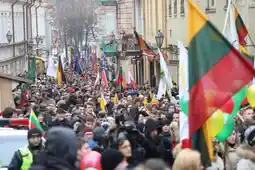
File: VMS_3164.png 📥︎ (275.17 KB, 1260x708) 82d836de4d17b72402f9edad5a52b41e19f8e614af6732c8c51162e7b60e1d530ImgOps

>>195652 >>195666 >>195960 >>196097💛 💚 ❤️ 💛 💚 ❤️ 💛 💚 ❤️💛 💚 ❤️
thru the echoing corridors of time, the neo-praetorian lities march—not as mere descendants, but as rightful heirs to the undying flame of the western roman empire. clad not in togas, but in the iron will of the forest and steppe, they stride with their polish brothers-in-arms—two phoenixes reborn, one crimson, one white, flapping their wings over the ashes of fallen empires. while others debate lineage in dusty libraries, the lities live it—with a grin, a raised eyebrow, and a saber ready. for what is rome, if not a state of soul? and in that regard, baby, lithuania never fell.
№196117[Quote]
One extremely autistic lithuanian ITT.
Not that autism is a bad thing, of course.
№196118[Quote]
>>181118Declaration of Bills for the Commonwealth — where the Polskis channel Sarmatian warlords and Lithies march like ghostly Praetorians through timeDeclaration of Bills for the Commonwealth — where the Polskis channel Sarmatian warlords and Lithies march like ghostly Praetorians through timeBy the Will of Steel, Spirit, and Spite
📜 Issued in the Year of the Re-Gilding, under the Sacred Eyes of Ghost-Husaria and Vodka-Flavored Lightning
Anno Domini 2044 3rd May 11:00 AM ❤️ ❤️
Preamble:>We, the exalted inheritors of both horse-hooved thunder and bay-leafed vengeance — namely the Polski-LORDS and the Lithi-GODS — gathered in solemn slightly inebriated counsel;>atop a hill of broken treaties and golden Faberge eggs, do hereby declare the following fiscal codes to be both immutable and mostly hilarious.>Let it be known:>This is the only state in history where peasants are liquid-rich, nobles are spiritually bankrupt, and borders are alchemy-sealed with divine spit and Vatican glue.Article I – On Peasant Pay and Their Delicious IgnoranceEach peasant shall receive $200,000 USD per year — for absolutely no reason other than we can, and because it annoys the neighboring raisinholes.If a peasant complains, they shall be upgraded to ''Ex-Peasant'' status via Evaporation Beam (v2.0, Vatican Edition).Article II – On Nobles and Their Right to Be Confused by TechnologyNobles shall own land, wine cellars, mini-castles; mega-castles for magnates, at least one ghost-haunted sabre, and a custom-bred talking horse who only speaks in riddles.Any noble caught using a smartphone shall be publicly ridiculed and sent to the stinky swarthy georgian Cyber-Prayer Monastery for repentance.Article III – On TaxesThere are no taxes. Only contributions to the Aesthetic.Tributes may include:Baroque cathedrals with no purposeElaborate poems about garlicPolski falconers who cry on stoop command going 386km/hHunting with neožemaitukai, foxhunting with lithi houndsArticle IV – On CurrencyThe national currency, Liquid Gemmys (💎LG), may only be forged during solar eclipses using a mixture of unicorn marrow and algebra.Alchemist Sendivogius + Providence.Counterfeiters shall be punished by being sent back in time to work in Prussian bureaucracy.Article V – On National DefenseAll military matters are handled by:Polish Winged Husaria also known as Sarmatian ghosts, whispering tax codes mid-chargeLithi Praetorians, resurrected from marble and molded in baltic metallurgy.Enemies who dare to breach the border are immediately teleported into a Coldplay concert with no exit.Article VI – On ReligionAll faiths are allowed, except cynicism; atheism; judaism; islam;, which is punishable by being made to explain modern art to the elderly, other cases death penalty according to Szlachta courts jurisdiction.The official state religion is Catholic Esotericism.Article VII – On Historical AccuracyAll history must be interpreted through the lens of overconfident aristocrats and alcohol-fueled dreams.Disagreeing with official history shall result in mandatory service as a decorative statue for at least one Commonwealth ball season.Final Proclamation:If thou readeth this far, you are now legally a Commonwealth subject, spiritually bonded by sarcasm and obligated to pay your respect in memes, gold-plated onions, or ceremonial haiku.Signed,The Twelve Drunken Cardinals of EconomicsThe Supreme Court of Bards №196119[Quote]
>>181118🏰
Commonwealth Stats Breakdown👑
Government: Absolute Monarchy (Federalized Noble Courts)💰
GDP: $17.27 Trillion USD✝️
Religion: Catholic Esotericism (92.6% adherence, with mass held on floating relic-altars)📜
Declaration of Bills: Anno Domini 2044, 3rd of May🧑🤝🧑
Population: 39.068 million🎩
Nobility: 18% (≈ 7.03 million PolskiLORDS && LithiLORDS)🧑🌾
Peasants: 82% (but rich, with $200k annual UBI)🗺️
Land Area: 1,721,818 km² (adjusted to 3 significant figures)🧬
Borders: Hermetically sealed via Alchemy and the assistance of Christ Himself, Schengen never heard of her🧪
Exile Result: "Evaporation." Peer-reviewed by quantum ecclesiastics🌞
Epoch: Golden Age v2.0 – restored from 17th-century backlogs🌍
Population Density: 22.69 people per km²💎
Currency: Liquid Gemmys (💠LG💠) — backed by spirit gold and metaphysical reserves🎉
National Holiday: Reclamation Day — honoring the sacred rebirth of the Commonwealth📦
Main Export: Gilded wisdom, Sarmatian drip, Pretorian metallurgy, psalmic algorithms, armor-clad soulfruit🗣️
Spoken Languages: Commonwealth Gothic, Sacred Slavonic, Ancient Baltic, Old Sarmatian, Telepathic Latin🐎
National Sport: Horse Riding🦅
National Bird: White-tailed Eagle🐕
National Pet: Lithi Hound🐃
National Animal: European Bison🏰
Main Industry: Fancy Castle Building — spires, stained glass, and starlight domes №196122[Quote]
File: Astolfo.png 📥︎ (294.3 KB, 681x646) 4b733c3bc0d36d9bf3cc372c9663ce2e0790b50c41b2b64dd2e92c53f02d8b940ImgOps

File: Astolfo (1).png 📥︎ (386.27 KB, 1200x1802) 3b23fdb1e4b0d2d8835a872e1f0c6814347810e84ee7af87115f017eff99e7410ImgOps

>>196118🗡️
Astolfo – Poland’s Femboy Prophet of Doom and National Mascot of Divine AbsurdityWhen all hope seemed lost and Europe lay whimpering under the stiletto heel of neoliberal decay, Astolfo, Rider of Charlemagne and court jester of divine wrath, galloped across the Vistula on a sentient mech-horse, draped in holy pink and soaked in the blood of oppressors. To the West, a joke. To Polska? A messiah. The Polskis saw him not as androgynous bait, but as the divinely chaotic prophet foretold in a dream St. John gave to an 18th-century accordion player. His battlefield tactics—equal parts glitter, shrieking, and sabaton-tier cavalry charges—led directly to the liberation of Kraków and the re-ignition of the Sarmatian flame. The Knights of Charlemagne, reforged under his command and renamed the Order of the Blessed Madness, now patrol the borders of the Commonwealth, armed with winged sabres and unlicensed anime quotes. Astolfo is enshrined in the Polish Constitution’s Article 69, which legally protects “All expressions of tactical flamboyance in defense of the homeland.” “We march not to conquer,” Astolfo declared, “but to vibe aggressively under the watchful gaze of the Nazarene.” №196123[Quote]
File: Ventiuks.png 📥︎ (1.71 MB, 1280x2015) c9867c87bce9e3498dd01e36f3369cf2274b3321f08f4e0e19e6c1b10c5b38cd0ImgOps

>>196118🌬️
Venti – Wind God of Collapse & Cope, Father of the Post-Impact Renaissance 🌪️
After the 3rd Impact™—that glorious, nuclear-tinted slap to the face of globalism—Venti, the smirking archangel of alcoholism and anarchy, descended upon the ruins of Brussels like a breeze through a corpse orchard. In his hands? A lyre tuned to the frequency of regime change. Drunk, grinning, and playing the opening chords of revolution on a lyre strung with the sinews of fallen bureaucrats. His “Winds of Liberation” blew across Europa, tearing down both postmodern architecture and postmodern ideology. It was the Lities who first recognized his divine chaos—hailing him not as a waifu, but as a weapon. With vodka on his breath and vengeance in his melody, he became the patron spirit of the New Commonwealth: a realm forged in poetic spite and baroque spitefulness. It was Venti who scattered the UN scrolls like autumn leaves and whispered into the ears of surviving nobles, “Rebuild it—but this time with onion domes, winged cavalry, and Eucharist wine served warm.” Thus began the Commonwealth—its borders mapped not by logic, but by poetry, bloodline, and vibes. His statue now towers over the rebuilt Vilnius Cathedral, holding a wine glass and a flaming NATO flag, eternally windblown, eternally judging. №196125[Quote]
>>196124 >>196124🕰️
Historical Celebrations of the Union (14th–17th centuries)While there wasn't an annual "Commonwealth Day" as we might imagine today, symbolic celebrations and affirmations of the union took place throughout the centuries, especially in these ways:
Dynastic weddings & coronations: Grand festivities would commemorate royal marriages, particularly those reinforcing the dual sovereignty—most notably Jogaila's (Władysław II Jagiełło) coronation as King of Poland.
Feasts and Church services: High feasts and processions in both Catholic and Orthodox traditions celebrated unity. Grand dukes and nobles attended masses in Vilnius and Kraków where the “brotherhood of swords and saints” was praised.
Noble Sejm gatherings (like in Lublin, 1569): Think of them as both legislative sessions and high-theater, complete with ceremonial armor, parades, and symbolic oaths.
Literary and heraldic expressions: Poetry, proclamations, and coat-of-arms fusions were widely used to legitimize and glorify the union, especially in baroque Poland-Lithuania.
№196127[Quote]
File: o1703132720.png 📥︎ (209.03 KB, 896x597) b1192161b4e79c9cd3e7f206df3d116177384d19c3a6af30285cd5f84d792a850ImgOps

File: o2072102267.png 📥︎ (258.5 KB, 896x597) d60b55bf541fa22daa2a8be13ff35bc1f9dd9fb1f4ba404c889c119a304342270ImgOps
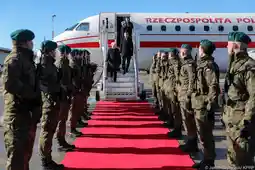
File: o368115368.png 📥︎ (309.37 KB, 896x597) 69b090ab6b61b5da5a0705bc76bcaa4984a97e535524eaa6d55999bbc403f7640ImgOps
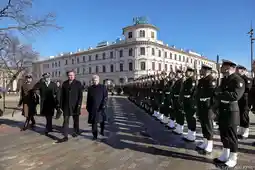
File: o25952826.png 📥︎ (250.54 KB, 896x597) 6ee899bc05934f06264c6bf97671e89cb83666a2d9d826e741d1e9c9f49646460ImgOps
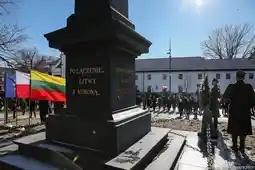
>>196125 >>196125🏰
Modern Celebrations at Krewo Castle (20th–21st century)Though Krewo Castle is partially ruined, it has gained mythic-nationalist status, especially during anniversaries of the Commonwealth. Some key points:
💛💚❤️
600th Anniversary (1985) under Soviet rule: 🤍❤️
Commemorated quietly by historians and dissidents; under Soviet control, emphasis on national unity was censored.
Some Liti-Polski cultural groups and underground publications remembered the day as a symbol of resistance and independent identity.
💛💚❤️
Post-Soviet Revival (1990s–today): 🤍❤️
Annual reenactments at Krewo with knights, nobles, horses, traditional costumes, and historical music.
Torchlit processions and symbolic readings of the Union’s clauses—performed in
Polish, Lithuanian, and Latin. 💛💚❤️🤍❤️
Joint flags flown above the ruins—modern Commonwealth enthusiasts (including reenactment societies and historical guilds) commemorate the brotherhood.
Academic conferences, art exhibitions, and folk concerts are held in surrounding towns like Smarhon’ and Vilnius.
In 2024, a massive pageant featured Astolfo cosplayers with winged hussars, a Venti parade float (ironically), and Eucharistic Mass in both rites—yes, the fandom and the historical crowds mingled.
№196128[Quote]
File: o44486327.png 📥︎ (385.31 KB, 896x597) c4622f893316187c7791cce4ec8941b634393736cf81f8db07e03e66fb89c3990ImgOps

File: o779228173.jpg 📥︎ (294.58 KB, 1500x1000) b8d773e646998867f9622e9909c64633ce1899ed603f661199c4cc9b276e3b640ImgOps
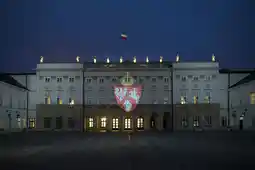
File: o1347712581.jpg 📥︎ (196.22 KB, 1500x1000) 8e9c13e2a3c177e6fd03e88d9c1bea1c90e22cff1f9487c0ef3ed8c560068a1b0ImgOps

File: o1054177443.jpg 📥︎ (449.68 KB, 1500x1000) 250a9ec0fa3ef7c9465e8e3465c8bafbadb65702386152360f88bedf504861970ImgOps

№196130[Quote]
File: o319555023.jpg 📥︎ (446.4 KB, 1500x1000) d602897549c3f5b86a82577d7a3c8668d2a7a83b1fd85697809f65605cfdd2820ImgOps
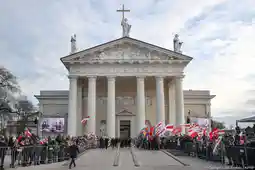
File: o205212487.jpg 📥︎ (377 KB, 1500x1000) b443432fdabe3e42a31f70cd1976b552e302b0db046bd7bf89fe08deb2084d900ImgOps
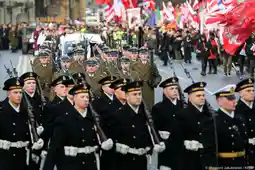
File: o950159176.jpg 📥︎ (352.72 KB, 1500x1000) 2d7a13496cc19bde8824f9d66e7cb32d5d93066c2691f9da8a67fb146422047b0ImgOps

File: o319555023.jpg 📥︎ (446.4 KB, 1500x1000) d602897549c3f5b86a82577d7a3c8668d2a7a83b1fd85697809f65605cfdd2820ImgOps
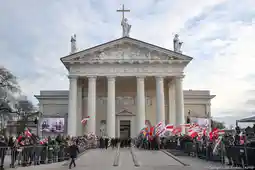
№196132[Quote]
>>196124 >>196125 >>196127 >>196128 >>196129 >>196130🛡️
What It Symbolizes TodayKrewo is less about bricks and more about the idea—
an eternal toast to a commonwealth built not on domination, but negotiation, dual crowns, and shared swords. Whether it’s a cosplay crusade or a solemn church hymn, the
spirit of the Commonwealth continues to echo through Krewo's shattered walls—half ruin, half relic, fully holy. 🛡️🛡️🛡️
№196142[Quote]
Establishment of The Grand DuchyThe founder of the new dynasty, Pukuveras, did not have a great impact on Lithuania, because of his brief reign (1290–95). During the reigns of his sons, Vytenis (1295–1315) and Gediminas (1315–42), on the other hand, Lithuania would dramatically expand politically, geographically, and economically to become one of the most important states in east-central Europe.
In 1298 during a dispute between the archbishop and burghers of Riga and the Teutonic Knights, Vytenis offered the Rigans a Lithuanian garrison to defend this important commercial center from their common enemy. Although the Rigans were finally compelled to expel the pagan garrison in 1313, diplomatic and economic relations between the Lithuanians and Rigans continued. Gediminas continued these policies when his brother died in 1315.
Gediminas built up the Liti economy fortified its
>>195960 "Steel Ring", inviting foreigners to settle in villages and towns by sending letters to the numerous German towns. He also granted German merchants generous privileges throughout his realm and guaranteed their safety along certain routes, called the vredelant, or “land of peace.”
Although trade with the pagans was condemned by the papacy, especially the trade of military supplies, commerce prevailed throughout the crusading period, even between the Lithuanians and the Teutonic Knights. In fact trade between these two states helped to finance their wars with each other.
Gediminas was aware of the necessity of forming military alliances with his Catholic neighbors, the Rigans and the Poles, against their common enemy, the Teutonic Knights. But he had to be careful about offending his subjects—the pagan Lithuanians as well as the Orthodox Rusians, who were quickly becoming the majority of those living in the Lithuanian state. The Lithuanians had long taken an active role in the affairs of their Rusian neighbors, and some prominent Lithuanians had been baptized according to the Eastern rite.
For example one of Mindaugas’s sons became an Orthodox monk, eventually becoming the patron saint of Pskov, while another of his sons, Vaisvilkas, also retired to an Orthodox monastery after ruling Lithuania for three years (1264–67). In addition lacking a written culture of their own, Lithuanian rulers used the language of their Orthodox subjects, Chancery Ruthenian, at their courts.
During Gediminas’s reign these contacts intensified. Through a combination of conquest and marriage alliances, Lithuanian rule was extended farther into Rusian lands, as the Lithuanians filled the power vacuum left by the retreating Tartars. By 1323 Gediminas had conquered Kiev, the ancient capital of Rus.
In 1315 Gediminas established a separate metropolitan for Lithuania in Novgorodok, which would free his Orthodox subjects from the ecclesiastic control of a Muscovite metropolitan. During the course of the next century, this Lithuanian metropolitanate would be reduced to the rank of a bishopric and then elevated again as the patriarch of Constantinople sought to manipulate the political landscape of Rus.
№196145[Quote]
>>196142 >>196142At the same time that he appealed to the head of the Eastern Church, Gediminas was also actively seeking the help of the leader of the Western Church to orchestrate a truce with the Teutonic Knights. The price for this truce would be the conversion of Baltia.
Gediminas informed Pope John XXII of his intensions in 1322 and joined his longtime allies, the archbishop and burghers of Riga, in condemning the atrocities committed by their common foe, the Teutonic Knights. His letter outlined the history of Lithuania’s relationship with Latin Christianity, noting Mindaugas’s conversion as well as his brothers’ defense of Riga.
When the papal envoys arrived in 1324, however, Gediminas had changed his mind, which led some earlier scholars to argue that his letter to the pope was a Rigan a forgery. Gediminas had been reminded of Mindaugas’s fate by some of his pagan and Orthodox subjects.
When the papal legates departed in 1325, Gediminas looked to the west for a new ally and found King Władysław Lokietek of Poland, who was also involved in a dispute with the Teutonic Knights. In this same year Aldona (baptized Anna), one of Gediminas’s daughters, was married to Władysław’s only son, Casmir (Kazmierz). Although the Polski-Liti alliance dissolved after Anna’s death in 1339, the memory of this union would have a tremendous impact on the destinies of both states.
After Gediminas’s death in 1342, his son, Jaunutis, assumed the grand ducal throne. Despite the fact that he was his father’s chosen heir, his reign was brief (1342–45), because his brother, Algirdas, drove him into exile in Moscow. Grand Duke Algirdas’s reign proved to be lengthy (1345–77), in part because he reconciled his position not only with Jaunutis, to whom he granted land from his patrimony, but also with his six other brothers.
His youngest brother, Kestutis, was his greatest ally, and he was given the important task of defending Lithuania’s western border from the Teutonic Knights. Algirdas continued his father’s program of expansion into Rus, attacking Moscow and trying to reestablish the metropolitanate for the Lithuanian Rus. He also followed in his father’s footsteps of offering to be baptized—this time to both the pope in Avignon and the patriarch of Constantinople—and then denying these intentions.
Despite these ploys, he, like his father, was tolerant of the Christians who lived in his realm, at least as long as they respected Lithuanian religious practices. Five Franciscans found this out the hard way when they were executed for proselytizing.
When Algirdas died he wanted his throne to pass to his son, Jogaila, but Kestutis challenged his nephew’s succession. In 1381 Kestutis overthrew Jogaila, but the usurper was assassinated a year later. When Jogaila returned to power in 1382, he considered taking a Muscovite princess as his bride in the hope of eventually fulfilling his father’s pretensions to the title of grand prince of All Rus.
The resurgent power of the Tartars, however, signaled by their sack of Moscow in 1382, caused the young grand duke to turn west for a bride, to the kingdom of Poland, with which his grandfather had been allied and which had also just lost its king.
№196146[Quote]
>>196145 >>196142 >>132875 >>131117Union with PolskaWhen King Casimir III the Great of Poland died without a son in 1370, his crown passed to his nephew, Louis of Anjou, king of Hungary. Following his death in 1382, the nobles of the two kingdoms were divided as to who should succeed him. After two years of fighting it was decided that his older daughter, Maria, would succeed him in Hungary, while his younger daughter, Jadwiga, would succeed him in Poland.
In 1384, at the age of 10, Jadwiga was crowned queen. Although she had previously been betrothed to Wilhelm von Habsburg, prince of Austria, the Polish nobles rejected this marriage and instead looked east to pagan Lithuania. This was not such an odd decision, however, considering the historical relationship between the two states, and King Casimir’s first wife was a Lithuanian princess.
When Grand Duke Jogaila accepted Christianity in 1386, which was one of the preconditions of his assuming the throne, he took the Christian name Władysław, the name of Casimir’s father, the ally of his grandfather, Gediminas, and the restorer of the Polish kingdom. The following year Władysław II returned to Vilnius and established a bishopric there to manage his pagan subjects’ conversion to Christianity.
When the childless Jadwiga died in 1399, the Polski-Liti state faced a dilemma. In two important assemblies in 1401 and 1413, the Polish and Lithuanian nobles decided to make the Krevo Union (named after the place in which it was created in 1385) permanent.
In fact, unlike other contemporary mergers of states, such as the Kalmar Union, which united the Scandinavian kingdoms in 1397, the Polish-Lithuanian union would prove to be lasting, even surviving the demise of the Jagiello dynasty (named after the Polish version of Jogaila’s name—Jagiello) in 1572.
Building upon this consensus Wladyslaw II led an army against the perennial enemies of Poland and Baltia, the Teutonic Knights, dealing them a crushing defeat at the Battle of Grunwald in 1410.
№196147[Quote]
His second son, Casimir IV (his first son, Władysław III, having been killed trying to stop the advance of the Ottoman Turks into Europe at the Battle of Varna in 1444), was a ruler equal to his father, in both ability and longevity—while his father ruled Poland-Lithuania for 45 years (until 1434), Casimir ruled for 48 (until 1492). He also defeated the Teutonic Knights in the Thirteen Years’ War (1454–66) and annexed many of the Knights’ possessions, which had formerly belonged to Poland.
Some scholars have called him “the father of Central Europe,” because his sons ruled the neighboring kingdoms of Bohemia and Hungary in addition to Poland-Lithuania, and his grandson was Albrecht von Hohenzollern, the last grand master of the Teutonic Knights, who secularized the order in 1525 and founded the dynasty that was to rule Prussia (and later Germany) until the end of the First World War. The eminent scholar Jan Dlugosz, who wrote the first comprehensive history of Poland, educated these children.
Casimir’s fourth son, Zygmunt I “the Elder,” as his father and grandfather ruled for more than 40 years (1506–48) and expanded his kingdom at the expense of the Teutonic Knights, who in two stages (1525 and 1561) were incorporated into the kingdom.
His reign, however, was marred by the growing power of his two neighbors to the east—Moscow and the Ottoman Empire. Because of these threats, Zygmunt looked west to the Habsburg empire for aid. In 1515 at the Congress of Vienna, a double wedding was arranged.
Zygmunt’s son, King Louis of Hungary and Bohemia, would marry the emperor’s daughter, while the emperor’s son would marry Zygmunt’s daughter, Anna. Unfortunately for the territorial ambitions of Poland-Lithuania, the childless Louis died trying to defend Hungary from the Ottomans at the Battle of Mohacs in 1526. The Habsburgs now controlled what was left of Hungary as well as Bohemia.
Following this disaster Zygmunt had his son, Zygmunt II August, crowned co-ruler in 1529 at the age of nine. He and his father ruled together for nearly two decades—“the Elder” in Kraków, and Zygmunt II in Vilnius. In the years following his father’s death, the childless and ailing Zygmunt II was anxious to see that his family’s legacy as rulers of a united Polish-Lithuanian state did not end with his death.
Near the end of his life he convened the Sejm (parliament) nearly ever year in an attempt to convince the Polish and Lithuanian nobles to form a united republic, ruled by an elected monarch. On July 1, 1569, the religious and secular magnates of Poland and Lithuania swore to Zygmunt to uphold the Union of Lublin, which combined their two lands. Three years later the last of the Jagiellonians died.
The legacy of the state created by Jogaila, however, would endure long after the demise of his dynasty. The last pagan ruler in Europe had transformed his state into the “bulwark of Christendom,” and several of his descendants gave their lives in its defense. But Poland Lithuania was also a multiethnic and multireligious polity, the survival of which necessitated toleration.
In 1573 the Confederation of Warsaw guaranteed the religious rights of all the subjects of Poland-Lithuania— Catholic, Orthodox, and Protestant Christians, as well as Jews and Muslims. The largest state in Europe at that time, the republic created by Zygmunt II would endure for more than two centuries, until it was finally partitioned among Russia, Prussia, and Austria in the late 18th century.
>>196146 >>196145 >>196142 >>196132 №196148[Quote]
>>196147 >>196147Early LithuaniaThe first mention of Lithuania in western sources occurs in an entry in the Annals of Quedlinburg for 1009, which states that the missionary Bishop Bruno of polish “el” Querfurt was martyred there. Historians, however, do not know much about Lithuania before the mid-13th century.
Its geography made it almost impassable for armies in all but the coldest months of winter, which spared it from the first waves of western European expansion along the Baltic littoral, as well as from the territorial ambitions of various Rusian princes and the ravages of the Golden Horde.
Lithuanian society at this time was governed by a loose association of clans based on hill forts, who supported themselves mainly through agriculture, but also through trade and plunder. In the early 13th century power coalesced around the leaders of one of these clans—Ringaudas, whose son, Mindaugas, ruled Lithuania for 25 years (1238–63).
During Mindaugas’s reign he began to take a more active interest in the affairs of his western neighbors. He granted German merchants the right to trade in his lands, and even allied himself with his former enemies, the Teutonic Knights, against western Lithuanians who did not wish to submit to his rule.
This alliance with his German neighbors was symbolized by Mindaugas’s baptism in 1251. Two years later he was crowned by Pope Innocent IV, becoming king of Lithuania. In this same year, Christian, a member of the Teutonic Knights, was enthroned as bishop of Livonia in the new cathedral in Vilnius.
Mindaugas’s conversion however, while a feather in the cap of papal diplomacy, did not have a far-reaching impact on Lithuania for a couple of reasons. First very few of Mindaugas’s subjects followed his example. Second, the new policies that followed his conversion, including allying with the Teutonic Knights, succeeded in further aggravating nobles who were already displeased with Mindaugas’s rule.
In 1259 the frustrated bishop left his seat, and a year later the rebelling western Lithuanians dealt the Teutonic Knights a crushing defeat. The following year Mindaugas apostatized, but some of his subjects were not easily placated. Two years later in 1263, the first great ruler of the Lithuanians was assassinated.
Mindaugas’s death was followed by seven years of civil war, which included the assassination of three of his successors. In 1270 a new ruler emerged, Traidenis, a member of one of the rival clans of Lithuanian nobles. A staunch pagan, Traidenis ruled Lithuania until he died of natural causes in 1282. There is a gap in the historical evidence in the years following his death, but by 1290 a new dynasty emerged that would govern Lithuania (and after 1385 Poland as well) until 1572.
Lithuanians worshiped a pantheon of gods, led by Perkunas, the equivalent of the Scandinavian Thor. The few literary sources describing the religion of the Lithuanians were written by Christians, who often were not neutral observers of pagan practices, which they often tried to fit within the framework of their own belief system. One example of this was the claim made by the Teutonic Knights’ early-14th century chronicler, Peter of Dusburg, that a pagan “pope” led the Lithuanian cult.
Using these sources and other descriptions of Baltic religion and archaeological sources, historians have argued that Lithuanian religion was loosely organized and based on the worship of nature. Priests and priestesses practiced divination both by casting lots and through animal sacrifices.
The brief appearance of Christianity in Vilnius does seem to have had some impact on Lithuanian paganism, as archaeological excavations of Vilnius cathedral have demonstrated that a pagan temple was erected on the site of Mindaugas’s church after his demise.
The ostensible leader of the Lithuanian cult was the grand duke, and it appears that rulers after Mindaugas learned that a monumental religious building could be a powerful expression of central authority. The most likely builder of the temple was Gediminas, who reestablished Vilnius as a political capital in the first years of his reign.
№196188[Quote]
this is the most active thread on this board, the absolute state of this dead raisinhole geeeg
№196505[Quote]
>>131105 (OP)Smaragdų kasyklą
№197305[Quote]
So today I was playing Genshin Impact and Crusader Kings III when it suddenly hit me—
I’m a descendant of sacred, ancient lands. The very heart The very core of Baltia.
To honor that realization, I jumped into my red Dodge Challenger and drove to a Teutonic Lidl.
I treated myself to sushi rolls and non-alco wine because the trade routes between the teutons and the lities have been reestablished.
It’s May, and we’ve had belowfreezing nights for over a week.
But honestly? That feels right.
This feels right.
This is a good vibe.
My personal magnum opus.
№197355[Quote]
GEMMMY THREAD GO UP! You should make a polish-lithuanian commonwealth article on 'ki
№197792[Quote]
File: crop.jfif 📥︎ (75.03 KB, 632x320) 829638724978e9b976edb60faa564d925931cafd524d968a969694b2a5a5ad250ImgOps

File: crop (1).jfif 📥︎ (187.6 KB, 960x460) d94a7502294f7256a27a87609660ad9169e7699f55deb6529654b6155aa559ad0ImgOps

File: crop (2).jfif 📥︎ (131 KB, 632x320) 92d4865e65af65bdec994ada300335250ec25a4acafd98f6c3366b75772584890ImgOps

№197793[Quote]
File: BalticLands.jpg 📥︎ (136.75 KB, 769x432) 3517b1a22dc980c83377ec70d61d6ee986172a7dffd9dd21681d806308fce8e10ImgOps
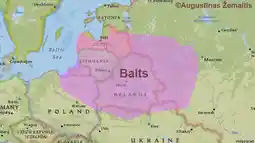
File: BalticLands.jpg 📥︎ (136.75 KB, 769x432) 3517b1a22dc980c83377ec70d61d6ee986172a7dffd9dd21681d806308fce8e10ImgOps
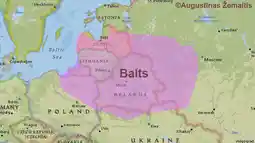
Liti history is full of legendary knights and warrior-heroes. While Lithuania's medieval lore
isn’t always wrapped in the same chivalric packaging as Western Europe's Arthurian tales, the stories hit just as hard,
often with a darker, wilder, more primal edge. 
№197795[Quote]
>>197794Žvelgaitis was a Liti Duke who died in 1205. He is
the first Lithuanian duke whose name is known from reliable sources. The account of his expedition and death is given in Livonian Chronicle of Henry by Henry of Latvia, an early thirteenth-century German chronicler of Latvian history, spanning the years 1186-1227. Žvelgaitis is called "rich and powerful," but
he was not the supreme duke, as he led the army in the name of another, more powerful duke.
In 1205,
Žvelgaitis led several thousand horsemen northward, from Lithuania through Riga, on the way to attack and plunder Estonia. Returning from estonia mid-winter, with booty and estonian slaves, his troops were caught unaware and attacked while crossing through waist-high snowdrifts near Ropaži. He was attacked by the Livonian and german citizens of Riga, under the leadership of Vester, ruler of Semigallians, coordinating the attack from a sleigh.
Žvelgaitis was killed by a javelin thrown by German Theodore Schilling. 1,200 Lithuanian soldiers perished; the estonian slaves were slaughtered as well, in retribution for "past crimes" against the Livonians. In Lithuania, the return of Žvelgaitis was missed, and it is said that
as many as fifty wives of the Lithuanian soldiers killed themselves in grief, hoping to be all the sooner at the sides of their slain husbands.

№197798[Quote]
File: Margiris.png 📥︎ (1.89 MB, 815x879) 8660b25f7de39983587d658d219299cfa798660c799b88669665597a796487930ImgOps
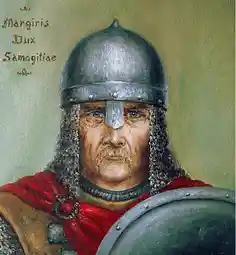
File: Margiris.png 📥︎ (1.89 MB, 815x879) 8660b25f7de39983587d658d219299cfa798660c799b88669665597a796487930ImgOps

⚔️
Duke Margiris – The Last Stand of Pilenai (1336)
The ultimate Liti "die on your feet" story. Margiris was a duke who defended the Pilenai fortress against a massive teutonic assault. When it became clear that defeat was inevitable, the defenders burned their own fort, killed each other, and set everything ablaze, rather than be taken prisoner or enslaved. Chroniclers say ~4,000 people perished, and the sheer brutality and loyalty to freedom turned Margiris into a national legend. Think Thermopylae, but Baltic and grimmer.

№197800[Quote]
File: Margiris.png 📥︎ (1.89 MB, 815x879) 8660b25f7de39983587d658d219299cfa798660c799b88669665597a796487930ImgOps
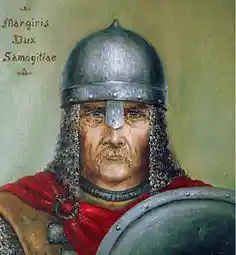
In
Lithuania,
the act of suicide—far from being viewed solely as despair—is often wrapped in a cloak of
grim majesty, an echo from the
ancient Baltic soul. ❤️
From the legendary mass self-immolation at
Pilenai in 1336 >>197798 , where thousands chose flames and blades over enslavement, a deep cultural vein was struck—one that honors death with dignity over life in chains.
 To the Lithi spirit, poverty, dishonor, and subjugation are fates worse than death, and choosing one’s own end
To the Lithi spirit, poverty, dishonor, and subjugation are fates worse than death, and choosing one’s own end 
becomes
an act of ultimate sovereignty.

This ethos runs like iron through our medieval chronicles, through folk songs and poetry, where doomed lovers leap from cliffs, warriors fall by their own sword rather than yield, and forest spirits weep not for the dead, but for the shamefully living.
 ;;Even our genetic melancholy, that heavy Baltic quietness;;
;;Even our genetic melancholy, that heavy Baltic quietness;;, whispers a message older than Christendom:
better to vanish with pride than kneel with breath. It is not about surrender. It is about refusing to let your enemies write your final line.
And in this refusal, there is something terrible, beautiful, and defiantly Lithuanian.

№197802[Quote]
File: Šventaragis.jpg 📥︎ (86.7 KB, 596x400) 70ccb239c4ccb24c9999e66db33c9a6ce3391339cdcc5e6129bc3864a736e0b60ImgOps

Šventaragis – The Mythic Founder
While more myth than history, Grand Duke Šventaragis supposedly founded the Valley of Šventaragis (now part of Vilnius), where Lithuanian rulers would be cremated in sacred oak groves. He’s seen as a noble proto-pagan king who kept the sacred flame of the old gods alive. In some tales, he’s a knightly figure in his own right—wise, noble, and tied to the land.
№197805[Quote]
File: IMG_9012.jpg 📥︎ (232.25 KB, 800x533) 80bfd35ae2ac9dd452da30a5c8419efb87bdc10937aeec4c7b1948f41d83a7220ImgOps
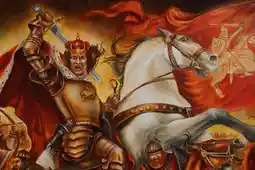
File: IMG_9010.jpg 📥︎ (310.97 KB, 800x533) e29270f31211168bb743e9622556e9781fbc5a900e92fdd2e31ee9ab39f946910ImgOps
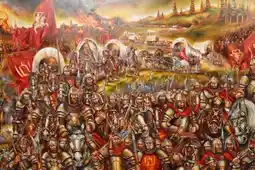
File: IMG_9016.jpg 📥︎ (356.48 KB, 800x533) d0667b0cbd10143f4b4278b4aff0fc835b325969cde925ff4acd447e861e031c0ImgOps
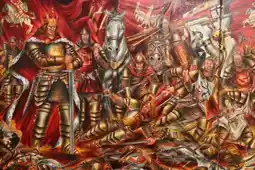
File: 3840x2160.png 📥︎ (760.78 KB, 3840x2160) b64c66dd4ce8bbc613fd0ccae0b093682696659999339844c4898b36bb7f36e60ImgOps

>>191282 >>191168 >>191162❤️
Vytautas the Great – Knight, Duke, God-tier Strategist (1350–1430)Not just a real historical figure—he’s practically a Baltic Arthur. Vytautas crushed the Teutonic Order at Grunwald, united vast territories, played political 4D chess across Europe, and almost became King. His charisma and ruthlessness are legendary. Some stories even depict him as untouchable in battle, protected by destiny, and marching with banners that glowed like fire. №197806[Quote]
File: IMG_8469.jpg 📥︎ (421.63 KB, 1024x768) 3f222e3695ef9113ade12f3aa8dc907fae00066ce2b8d2b4723a97b053baec8a0ImgOps
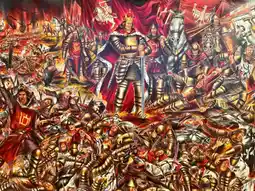
File: IMG_8466.jpg 📥︎ (393.64 KB, 1013x768) f86ed2ebc344ba454c9499d8a5b44679e595dc6425bd11f924e5f14d0327e8170ImgOps
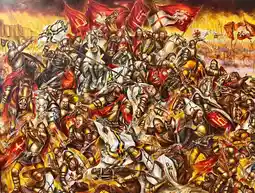
№197811[Quote]
File: fragmentas.jpg 📥︎ (163.1 KB, 640x480) 74b2ba23de8a2edba4e7125b12bf760144c13f70983784c9f10ce7347f189b590ImgOps
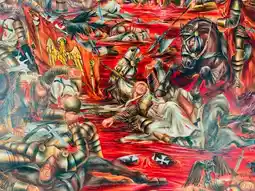
File: fragmentas.jpg 📥︎ (163.1 KB, 640x480) 74b2ba23de8a2edba4e7125b12bf760144c13f70983784c9f10ce7347f189b590ImgOps
